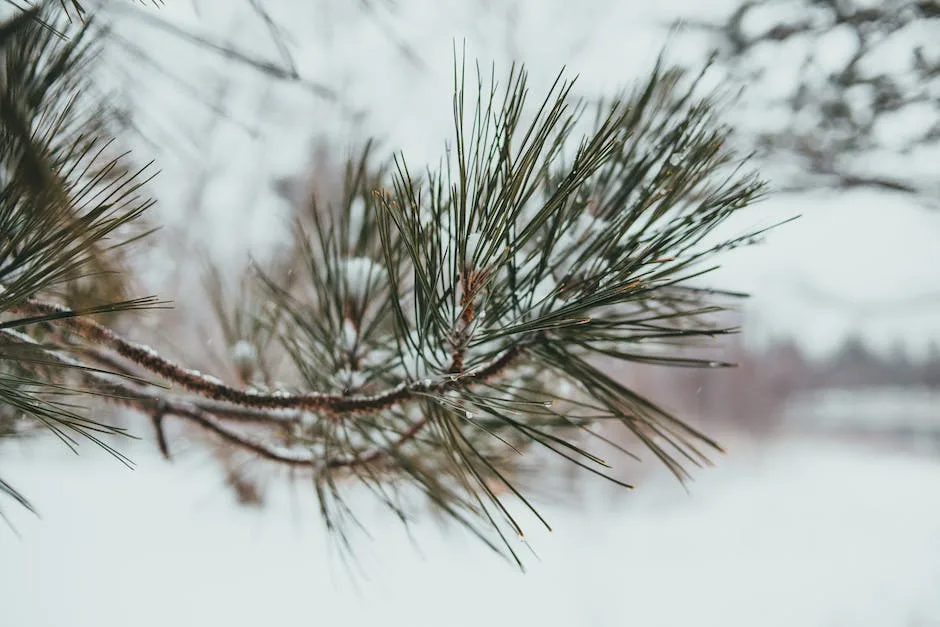Pine trees are one of the longest-living tree species in the world. The oldest known pine tree in the world is the Great Basin bristlecone pine, which is native to the western United States. This tree species can live for more than 5,000 years.
Pine trees can live for hundreds of years. The oldest recorded pine is over 4,000 years old!
Why do pine trees live so long?
The oldest known tree in the world is a bristlecone pine that lived greater than 5,000 years. The tree’s exceptional longevity is due, in part, to the toughness of its wood, which is very dense and resinous, making it more impervious to insect invasion, fungal infection, and environmental changes.
Methuselah, a bristlecone pine tree in California’s White Mountains, is the oldest tree in the world. The tree’s age was determined by the measurement of core samples taken in 1957, which showed that it was 4,789 years old. The tree’s age was later confirmed by tree-ring dating. Methuselah is one of the few living things on Earth that has witnessed the rise and fall of civilizations. The tree is a symbol of the tenacity and resilience of life.
How can you tell if a pine tree is dying
Pine trees are an important part of the ecosystem, so it’s important to be able to spot a dying pine tree. There are a few key indicators that a pine tree is dying: needle discoloration, broken branches, spots and cankers, bark shedding, early or frequent needle drop, excessive tree sap, and cut off affected parts. If you see any of these signs, it’s important to water the tree more and try to revive it. If the tree is too far gone, it’s important to remove it so that it doesn’t spread disease to other trees.
A tree’s growth slows as it gets older. By the time a tree is 90 years old, it grows only half a meter per year. At 150 years old, its growth has almost stopped, although the tree may live for another 100 years.
Do pine trees fall over easily?
Pine trees are among the most likely to break in high winds or under ice and snow loads in storms. This is because they are tall and full of foliage at the top, which makes them top-heavy and more prone to toppling over. If you live in an area that is prone to severe weather, it is best to avoid planting pine trees (or other tall, full-bodied trees) near your home or other structures.
Arborists typically assess risk by the type of tree, the tree’s size, and the damage it might cause. Evergreen trees, pines in particular, are more likely to come down because their canopy is always present and it’s thick and heavy—creating a “windsail effect,” according to Scow.
Which US state has the most trees?
Did you know that Maine has the highest percentage of forest coverage of any state in the U.S.? It’s true! And not only that, but Alaska is home to the biggest national park in the country. So if you’re a lover of trees and all things nature, these two states should definitely be on your radar.
Methuselah is a bristlecone pine in the White Mountains of California. It is estimated to be about 5,000 years old, making it the oldest known non-cloned living organism on Earth. The exact age of Methuselah is unknown, as it is difficult to determine the age of a tree without disturbing it. However, scientists have used carbon dating to estimate its age. Methuselah is named after the biblical figure who is said to have lived to be 969 years old.
What’s the oldest tree in America
The oldest recorded living tree on record is a Great Bristlecone pine, believed to have a lifespan of over 5,000 years. Methuselah, another Bristlecone pine located in Inyo County, California is second on the list, at an age of 4,847 years.
Pine wilt disease is caused by tiny worms called pinewood nematodes and beetles called sawyers. The pinewood nematodes enter the tree through the sawyer beetle’s boreholes, and the beetles spread the disease by infecting other trees as they move from tree to tree. The disease causes the pine tree’s needles to turn yellow and fall off, and eventually the tree dies.
Is a pine tree dead when all needles are brown?
Pine wilt disease is a problem that can cause the needles of evergreen trees to turn brown and drop. If you notice that the needles on your tree are browning all over and not just falling to the ground, pine wilt disease is likely the problem. This disease is most common in late summer and early fall, so if you notice browning needles on your tree, contact a tree care professional to have the tree inspected.
Pine trees are very susceptible to diseased caused by standing in water. To increase drainage and take measures to prevent pines from standing in water, follow these tips:
-If the tree is young, trim away any rotted roots from the plant.
-Proper watering should allow this condition to correct itself over time, though the browned needles will never re-green.
How much is a pine tree worth
A board foot is a unit of measurement for lumber, and is equal to one square foot, one inch thick. So, a log that is 1000 board feet is worth $60.
Pine trees grow rapidly and can become quite crowded. If they become too crowded, growth slows and they may die. As a result, it is important to thin out pine trees to provide more growing space for the best trees. This also helps to remove diseased, damaged or dying trees.
What is a tree that never stops growing?
Giant sequoia trees are some of the largest living things on earth. They can grow to be over 300 feet tall and 100 feet in circumference. And they just keep getting bigger and bigger as they age. Once a sequoia tree starts growing, it doesn’t stop until the day it dies.
When you are planting a tree, you have to think about how far below ground its roots might extend. This is especially important if your tree is planted close to your house. While it’s always wise to plant trees about 15 feet away from your house, sometimes you are in a situation where you purchased a home with existing mature trees. In these cases, you need to make sure that the roots of the tree are not going to damage your foundation.
Do pine tree roots go deep
The reason a pine tree’s root system can extend away from the tree is because the tree is seeking out water. The tap root can go down as deep as the tree is tall in search of water, while the shallower roots are spread out wide to absorb as much water as possible. This is why it’s important to not plant other trees too close to pines – they will compete for water and the pine will likely lose.
Pine trees are capable of withstanding strong winds due to their strong roots and flexible branches. In research, it has been shown that a mature pine tree can handle gusts up to 50 mph without any impact. However, more powerful gusts can cause broken branches, uprooted trunks, and even complete blowovers. Despite this, pine trees are still incredibly resilient and can quickly recover from any damage.
What is the danger of pine trees
Pine trees are a huge contributor to air pollution. They release gases that react with airborne chemicals to create tiny, invisible particles that muddy the air. This is a serious problem because it can cause respiratory problems and other health issues. We need to be aware of this and take steps to reduce our impact on the environment.
Cutting the upper main stem of a large evergreen tree results in internal decay, disease or infestation by damaging insects. It also removes the most productive portion of the tree.
What are the disadvantages of pine trees
Pine trees are a type of needled evergreen, which means that they drop needles throughout the year. This can be a disadvantage if you are trying to keep a clean yard, as the needles can be difficult to remove and can be a trip hazard. Another disadvantage of pine trees is that they exude a sticky sap. This sap can be difficult to remove from clothing and can attract insects. Additionally, pine trees need an acidic soil pH below 70 to thrive. Most pine trees will grow in poor soils with low levels of nutrients, but if the soil pH is not acidic enough, the pine tree will not be able to absorb the nutrients it needs to survive.
The oak was once again victorious in the People’s Choice poll for America’s National Tree. It has held the title since 2004, in a close race with the maple.
What state has the most untouched land
The Noatak and Gates of the Arctic Wildernesses in Alaska are some of the most vast and unbroken wilderness areas in the lower 48 states. Together, they make up over 13 million acres of untouched land. This is an incredibly special and unique place that is home to an incredible variety of plant and animal life. It is a place where people can come to experience true solitude and wilderness.
The area-wise forest cover in the country is very important because it provides a natural habitat for many animals and plants. Madhya Pradesh has the largest forest cover in the country followed by Arunachal Pradesh, Chhattisgarh, Odisha and Maharashtra. These states have a high density of forest cover which helps to maintain the ecological balance in the environment.
Conclusion
Pine trees can live up to 800 years.
Pine trees are a type of coniferous tree, and they are known to have a very long lifespan. In fact, the oldest known living pine tree is over 4,600 years old!
A lot of factors can affect how long a pine tree lives, such as the amount of sun and water it gets, the type of soil it’s in, and whether or not it’s eaten by insects. But generally speaking, pine trees can live a very long time – sometimes even longer than humans!
Mark Hoffman is a dedicated arborist and tree care specialist with over a decade of experience. His love for trees began when he visited Yosemite National Park as a teenager and was awestruck by the giant sequoias. Mark pursued his passion by studying forestry at Michigan Technological University, where he earned a Bachelor of Science degree.
Since then, he has worked tirelessly in the field of arboriculture, helping to preserve and protect trees in his community. His expertise and dedication have made him a respected leader in the industry and a valuable resource for anyone seeking advice on tree care.
